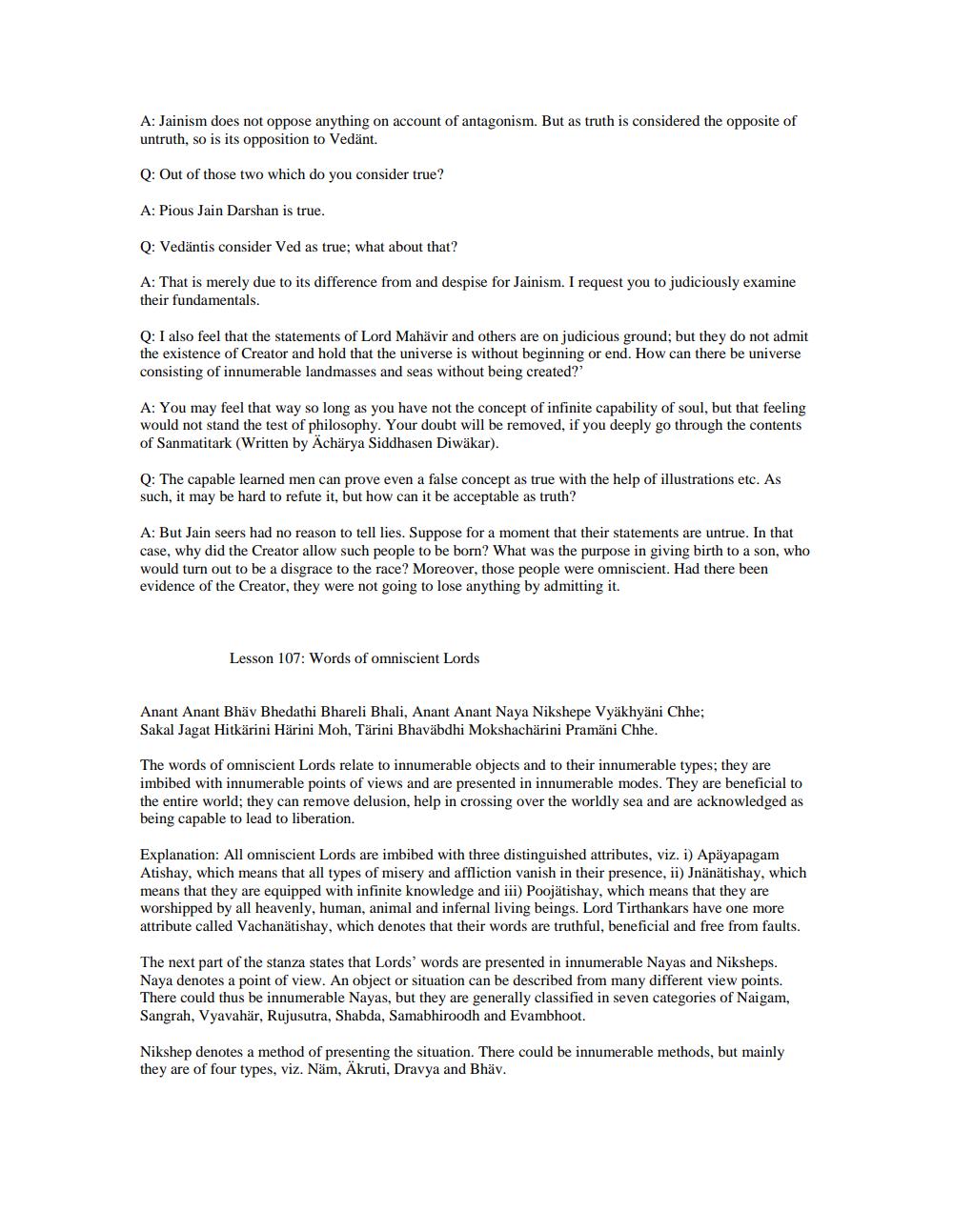________________
A: Jainism does not oppose anything on account of antagonism. But as truth is considered the opposite of untruth, so is its opposition to Vedänt.
Q: Out of those two which do you consider true?
A: Pious Jain Darshan is true.
Q: Vedäntis consider Ved as true; what about that?
A: That is merely due to its difference from and despise for Jainism. I request you to judiciously examine their fundamentals.
Q: I also feel that the statements of Lord Mahävir and others are on judicious ground; but they do not admit the existence of Creator and hold that the universe is without beginning or end. How can there be universe consisting of innumerable landmasses and seas without being created?
A: You may feel that way so long as you have not the concept of infinite capability of soul, but that feeling would not stand the test of philosophy. Your doubt will be removed, if you deeply go through the contents of Sanmatitark (Written by Achärya Siddhasen Diwäkar).
Q: The capable learned men can prove even a false concept as true with the help of illustrations etc. As such, it may be hard to refute it, but how can it be acceptable as truth?
A: But Jain seers had no reason to tell lies. Suppose for a moment that their statements are untrue. In that case, why did the Creator allow such people to be born? What was the purpose in giving birth to a son, who would turn out to be a disgrace to the race? Moreover, those people were omniscient. Had there been evidence of the Creator, they were not going to lose anything by admitting it.
Lesson 107: Words of omniscient Lords
Anant Anant Bhäv Bhedathi Bhareli Bhali, Anant Anant Naya Nikshepe Vyäkhyäni Chhe; Sakal Jagat Hitkärini Härini Moh, Tärini Bhavabdhi Mokshachärini Pramäni Chhe.
The words of omniscient Lords relate to innumerable objects and to their innumerable types, they are imbibed with innumerable points of views and are presented in innumerable modes. They are beneficial to the entire world; they can remove delusion, help in crossing over the worldly sea and are acknowledged as being capable to lead to liberation.
Explanation: All omniscient Lords are imbibed with three distinguished attributes, viz. i) Apayapagam Atishay, which means that all types of misery and affliction vanish in their presence, ii) Jnänätishay, which means that they are equipped with infinite knowledge and iii) Poojätishay, which means that they are worshipped by all heavenly, human, animal and infernal living beings. Lord Tirthankars have one more attribute called Vachanätishay, which denotes that their words are truthful, beneficial and free from faults.
The next part of the stanza states that Lords' words are presented in innumerable Nayas and Niksheps. Naya denotes a point of view. An object or situation can be described from many different view points. There could thus be innumerable Nayas, but they are generally classified in seven categories of Naigam, Sangrah, Vyavahär, Rujusutra, Shabda, Samabhiroodh and Evambhoot.
Nikshep denotes a method of presenting the situation. There could be innumerable methods, but mainly they are of four types, viz. Näm, Akruti, Dravya and Bhäv.




